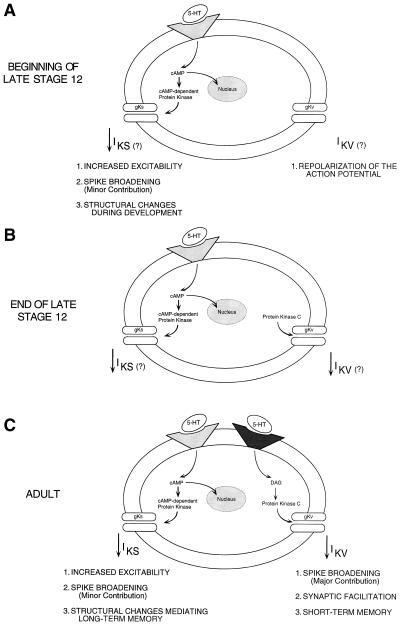Figure 4.
A model for the sequential development of the 5HT-activated signaling cascades in the tail sensory neurons. The subcellular pathway that links 5HT to modulation of excitability is fully expressed at the youngest stage of development that has been examined. Conversely, maturation of the subcellular pathway that links 5HT to spike broadening occurs through the final stage of juvenile development. For the effects of 5HT on excitability and spike duration in adult sensory neurons (C), the ionic currents that mediate these two forms of neuromodulation have been well characterized (IKS and IKV, respectively). Moreover, the second messenger systems that link the 5HT receptor to modulation of the ionic conductances have been characterized (PKA and PKC, respectively). Although we have not directly assayed identified ionic currents in juvenile sensory neurons, we hypothesize (indicated by question marks in A and B) that the modulation of ionic conductances underlying spike broadening and increased excitability are similar to those characterized in the adult. The posited developmental sequence of the pathway responsible for major spike broadening is illustrated in the three steps of the model. In the first step, the ionic conductance is expressed but cannot yet be modulated (A). In the second step, the conductance can be modulated by the second messenger but the second messenger cannot be activated by the neurotransmitter (B). In the final step, the neurotransmitter is now able to activate the second messenger and thereby complete the pathway (C).

